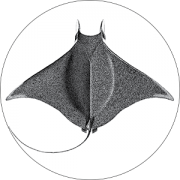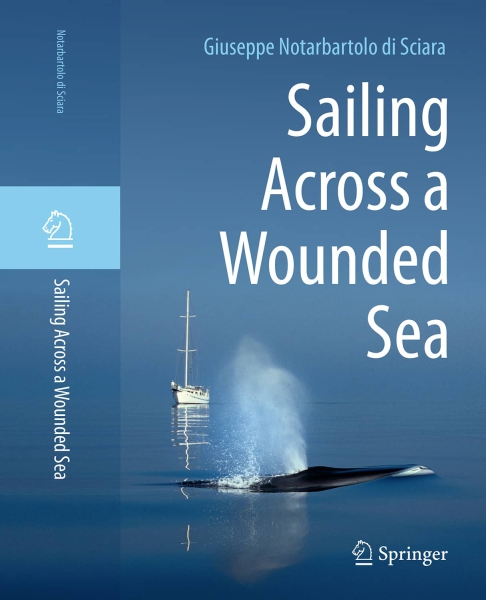Until the mid-1980s there was virtually no information about the ecology of Mediterranean top predators such as whales, dolphins, seals, sharks and rays, based on direct observations at sea (as opposed to fishery data). Lack of knowledge was crippling conservation initiatives. To help fill the gap, in 1986 I founded the Tethys Research Institute, a not for profit research organisation. Tethys produced the first ever quantitative ecological assessment of cetacean populations in the seas surrounding Italy, providing indications on the presence of important cetacean habitat useful for the designation of marine protected areas. In addition to more traditional research techniques such as line-transect surveys and photo-identification-based mark/recapture methods, we also applied what at the time were totally innovative techniques to cetacean investigations in the Mediterranean, such as the application of genetic and contaminant studies to small skin and blubber biopsies remotely collected from whales and dolphins; the use of satellite telemetry to track cetacean movements; the application of vessel and aerial survey techniques to estimate cetacean populations; and the use of laser range-finder binocular to track whale movements and study short-term behaviours.
Work accomplished by Tethys during the ensuing three decades strongly supported the evidence of the uniqueness of the Mediterranean megafauna, combined with highly concerning levels of threats to its survival.
More than thirty years after its foundation, Tethys continues to support the marine environment through research, conservation and awareness activities.
The Pelagos Sanctuary for Mediterranean marine mammals
Two important facts had become of public domain in the late 1980s, in large part through the work of Tethys: the awareness that the western Ligurian Sea was by far, of all the seas surrounding Italy, the most important area for cetaceans, and the formidable threat that these mammals were subjected to there, due to the calamitous and un-checked proliferation of pelagic driftnet fishing which was causing the death of large numbers of whales and dolphins accidentally caught and drowned in such nets. The phenomenon was atrocious, unsustainable and intolerable.
Thus, the idea of creating a sanctuary in the area, where cetacean populations could thrive without major concerns, was born. In collaboration with Europe Conservation (an NGO which no longer exists) and with support from the Rotary Club, I conceived the idea of establishing a very large (almost 90,000 km2) UNESCO Biosphere Reserve between northwestern Italy, south-eastern France, Monaco and Sardinia, surrounding the whole of Corsica. The idea sounded rather crazy at the time, because most of the envisaged area was in the high seas still beyond the jurisdiction of any nation. So it wasn’t clear who could take such initiative, and worse even, who could enforce it. Nevertheless the work was carried forward and a proposal with the title of Project Pelagos was presented at a meeting in Monaco on 2 March 1991, at the presence of His Serene Highness Prince Rainier III. The Prince did not think it was such a crazy idea, and fully supported the project. Thanks to the keen interest of Carlo Ripa di Meana, formerly the European Commissioner for the environment and at the time Italy’s Minister of the Environment, France, Italy and Monaco started negotiating an agreement soon thereafter, and eight years later the Pelagos Sanctuary was formally established by a tripartite treaty signed in Rome on 25 November 1999. Quite unfortunately, the parties decided not to create a Biosphere Reserve, although the Sanctuary was later included in the list of Specially Protected Areas of Mediterranean Importance (SPAMI) under the aegis of the Barcelona Convention, which allowed its designation in parts of the Mediterranean high seas.
As the world’s first marine protected area established in what, at that time, were still Areas Beyond Natural Jurisdiction (ABNJ), the Pelagos Sanctuary has served significantly the purpose of attracting attention to the need to protect the high seas, although today, so many years after its designation, I cannot state that the sanctuary has been doing much for the local populations of whales and dolphins. Pelagos was never properly managed — in fact, it has no management body.
However, the situation of marine protection of the Mediterranean is different today from the late ’80s, when the idea of Pelagos was conceived. First, driftnets are no longer the main threat to cetaceans, having been made illegal (although they still cause cetacean mortality in pockets of illegality still persisting in places such as southern Italy, Morocco and Turkey). Second, in the frame of a process that will eventually cause international waters to become extinct in the Mediterranean, Pelagos no longer lies in ABNJ, being now in part within France’s and Monaco’s Exclusive Economic Zone and Italy’s Ecological Protection Zone. Third, the Agreement on the Conservation of Cetaceans of the Black Sea, Mediterranean Sea and Contiguous Atlantic (ACCOBAMS), established under the Convention on Migratory Species, has come into force since 2002, with a wide regional membership and the mandate of protecting cetaceans everywhere in the Mediterranean, not just inside the borders of Pelagos.
All of this considered I think that, its shortcomings notwithstanding, the Pelagos Sanctuary continues to serve an important function, at a minimum because of the awareness, strong sense of pride and belonging that it has generated during the years within the human communities living along its coasts in Italy, France and Monaco.


